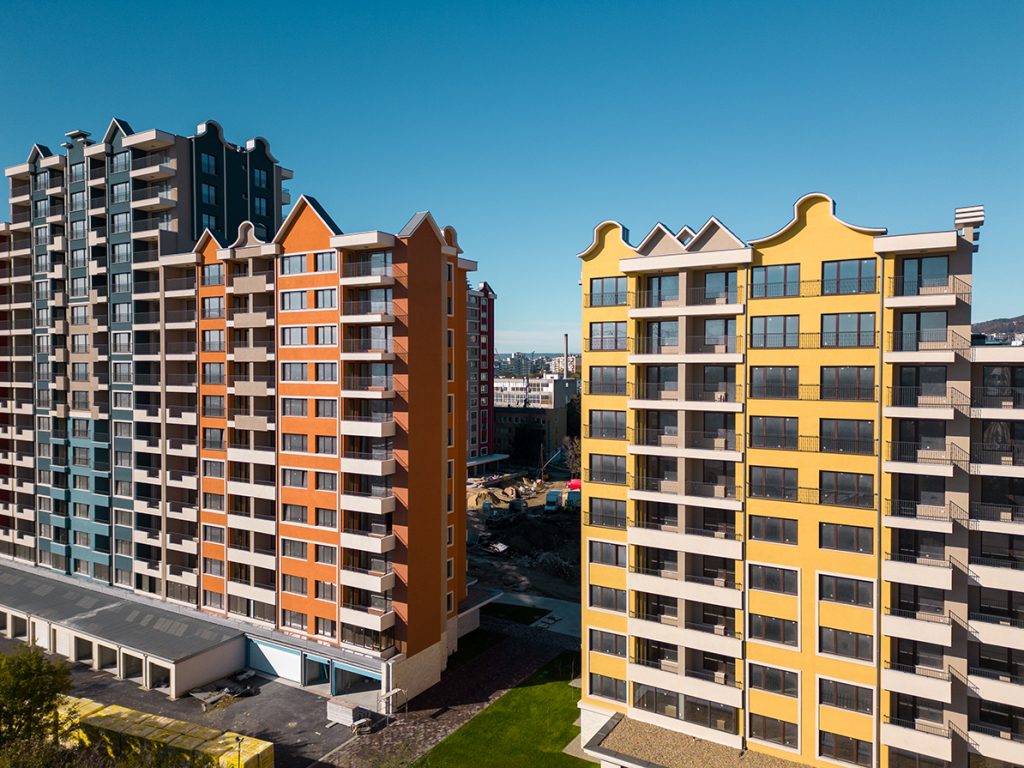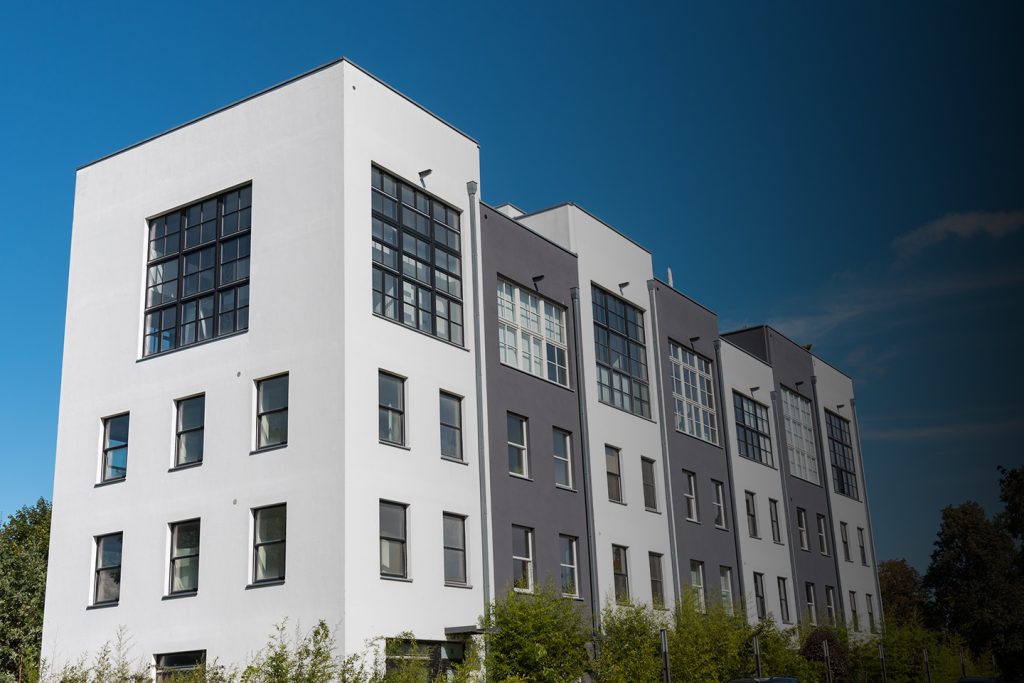Brightening Up Living Spaces
Vacuum glazing is ideal for residential apartments. It provides residents with enhanced thermal comfort (U Value – 0.49 W/m2K), improving energy efficiency, improved noise reduction (Rw: 36 dB), and combining this with a high natural light (80%) transmission, allows apartments to stay peaceful even in highly populated city centres.
When considering replacing windows, PassivGlas™ vacuum glazing can be retrofitted into most existing frames with little or no disruption, and their sleek design and slim profiles (from 6.15 mm to 12.15 mm) allows for maximum natural light transmission, and can promote a sense of well-being among residents. PassivGlas™ can immediately offer benefits to the resident, whilst also contributing to a modern aesthetic when upgrading an apartment.

Sustainable Living
PassivGlas™ Ultimate can also be used as an alternative to conventional double glazing, when constructing new build apartments, unit thicknesses from 20 mm.
The efficiency of vacuum glazing helps lower carbon emissions associated with household energy consumption. This makes it a sustainable choice for eco-conscious homeowners looking to reduce their carbon footprint and contribute to a greener future.
Frequently Asked Questions
What are vacuum units?
Vacuum Insulated Glazing or VIG is an advanced fenestration type of insulating unit. It consists of two glass panes, like a standard Insulating unit, but rather than the spacer bar and an air gap, VIG’s are separated by a micro vacuum gap, with a glass solder edge seal.
Are they fully tested?
Yes, they are tested to recognised industry standards:
Impact resistance: EN 12150-2 & ANSI Z97.1-37 & EN 12600 & BS356 (recently completed)
Weathering: EN1279-5 & ASTM E546/E2188/E2189
U-Value: ISO8301/EN12667 (Recently UKAS tested) & ASTM C518
Soundproof: ISO 10140-2 (Recently UKAS tested)
Do the standard units use coated glass?
Yes, all PassivGlas™ Linear units incorporate a Low-e single silver toughenable coating.
In order to meet the current Part O regulations, a Low-e double silver coating would be needed to meet the 70/40 requirements. Please check with VGN as to availability and MOQ for this product range.
What is the expected life?
Expected life on the unit is 25+ years due to there being no spacer bar to fail.
Will there be any condensation
Condensation is formed when the air temperature surrounding an object falls below the dew point and changes into a liquid
Internal:
Although condensation will not form on the internal surface of a VIG unit, Vacuum Glazing does not eradicate condensation from the room.
The warmer inner glass will potentially change the rooms cold point.
It is advisable to ensure all rooms have effective ventilation/circulation.
External:
Condensation may form on the external glass surface under certain conditions.
Generally, forms a grid around the micro-pillars.
Will disappear when the outside temperature warms with the morning sun.
It is an indication of how efficiently your windows are at reducing thermal loss.
Condensation between glasses:
An indication that the Vacuum has been lost.
Consult your supplier to confirm course of action.

